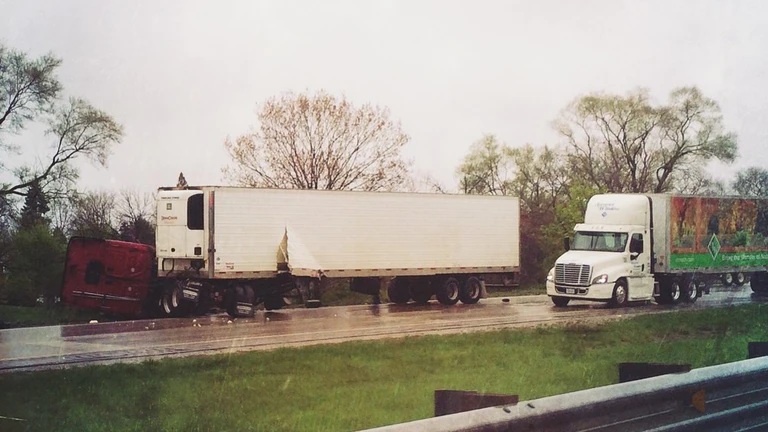Entertainment often shows people living on the edge. The fact that dangerous stunts commonly appear on our screens suggests a little living on the edge is acceptable. In the world of highway safety, however, going to the edge can lead to injury and death.
I was waiting for my favorite TV show to come on, watching all-too-familiar commercials. There’s that lady dressed like a mom, tightrope walking several stories above a crowded street, carrying meals in each hand to her family on a nearby rooftop. There’s the deep-voiced insurance pitchman, ostensibly seated in an intersection as cars seemingly careen around him.
You’ve seen these ads, too. And like me, you’ve read the fine print at the bottom of the screen: “Professional stunt woman, professional driver on closed course, or do not attempt at home.”
Advertising and entertainment often show us people living on the edge. It’s attention-getting and an escape from everyday routine. The very fact that dangerous stunts so commonly appear on our TV and movie screens suggests, fine print aside, that just maybe a little living on the edge is societally acceptable. In the world of highway safety, however, going out to the edge can lead to injury and death.
The definitive compilation of what leads to accidents on the highway is the 2007 Federal Motor Carrier Safety Administration (FMCSA) Large Truck Crash Causation Study (LTCCS). Over 33 months, FMCSA and the National Highway Traffic Safety Administration (NHTSA) analyzed in depth 963 cases pulled from 120,000 fatal and injury crashes involving 141,000 trucks.
Often cited is the LTCCS finding that, in two-vehicle crashes, trucks were assigned the “critical reason” (the error leading to the crash) only 44% of the time. However, that’s 44% of two-vehicle crashes where trucking could have operated more safely. Here are the top three LTCCS findings of trucks “living on the edge” and failing.
Speed too fast for conditions. Trucks traveling too fast – too fast for roadway, weather or traffic conditions – was a factor in 23% of the truck crashes. That’s not number one as a percentage – read on – but trucks traveling too fast for conditions were 670% more likely to be assigned the “critical reason” for the crash than were trucks where speed was not an issue.
So, legal speed limits aside, what should be considered “too fast”? FMCSA suggests reducing your speed by one-third on wet roads and by half or more on snow packed roads. A speed of 60 MPH on dry pavement should be cut to 40 MPH on a wet road, and to 30 mph on a snow-packed road. Going at a higher speed is “living on the edge.”
Brake problems. Fully 29% of trucks in the LTCCS crashes had brake problems, the most frequently found truck crash factor. The LTCCS said those trucks were 170% more likely to be assigned the “critical reason” for the crash than were trucks with properly adjusted brakes. Now, consider poor brakes combined with excessive speed. That’s a recipe for dying on the edge.
Unfamiliarity with roadway. No one can possibly drive every road everywhere, but truck driver failure to plan in advance, knowing distances, routes and turns, was a factor in 22% of LTCCS truck crashes and increased the risk by 100%. Our “living on the edge” culture suggests that sometimes we should just “wing it” and go. But the LTCCS said that failing to plan is planning to fail.
The LTCCS has a range of other factors that contribute to truck crashes. Let’s return, though, to those fine print “professionals” who are “living on the edge” in TV ads. They know their own limits; where their “edge” is, as unsettling as it may be to us viewers. On the highway, truly professional motor carriers and truck drivers know their limits, too. They adhere to what is legal and what is safe for conditions… and leave the excitement to the TV screen where it belongs.
By Steve Vaughn
CUT COTS OF THE FLEET WITH OUR AUDIT PROGRAM
The audit is a key tool to know the overall status and provide the analysis, the assessment, the advice, the suggestions and the actions to take in order to cut costs and increase the efficiency and efficacy of the fleet. We propose the following fleet management audit.




